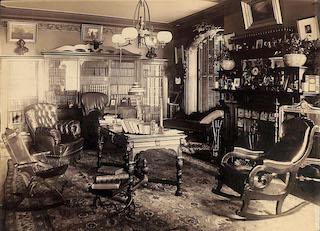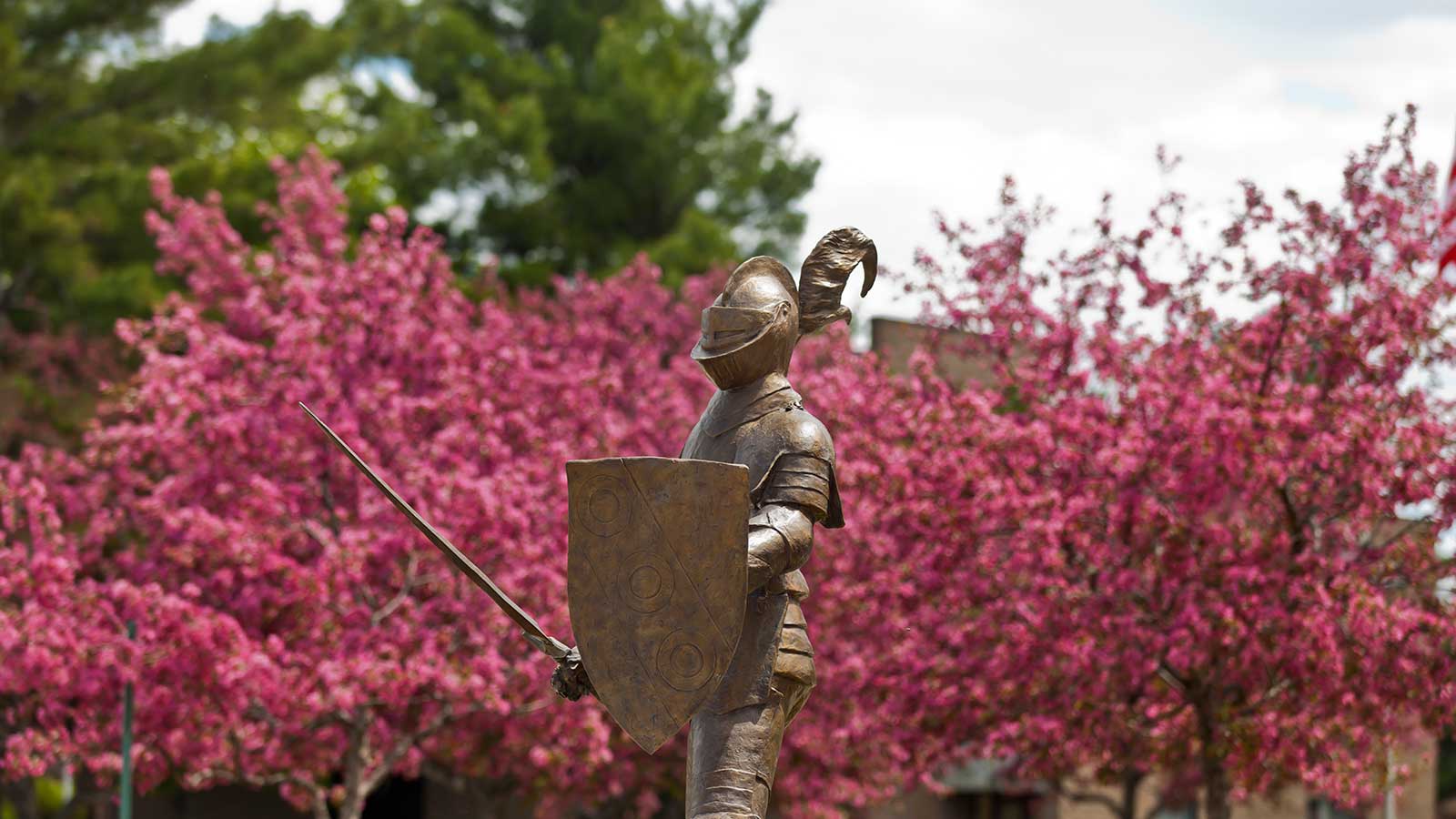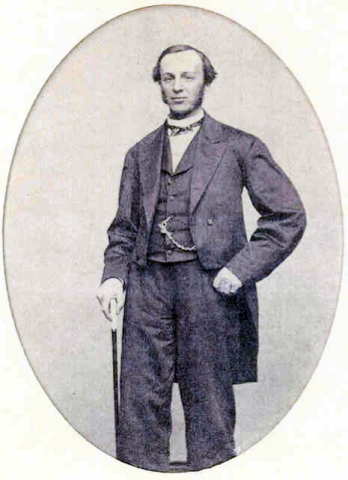
History

Founded in 1896 to honor Thomas S. Clarkson, a pioneering entrepreneur and humanitarian, Clarkson University today is a private, national research university that is a leader in technological education and sustainable economic development through teaching, research and scholarship and innovation.
Consistent with the founders’ vision to always seek out the real needs of the American people, Clarkson stretches the boundaries of solution-oriented thinking by looking to what’s next, challenging the status quo, and leveraging our combined ingenuity at the intersections of science, technology, engineering, arts and business to create real impact, relevant innovations and enduring value in the world.
With its main campus in Potsdam, New York, and additional graduate program and research satellites in Saranac Lake, Schenectady in the Capital Region, and online, the University attracts more than 4,000 enterprising, high-ability full-time scholars from diverse backgrounds and many more in its continuing education offerings. Our students embrace challenge and thrive in rigorous programs in engineering, arts, sciences, business, education and health professions that lead to bachelor’s, master’s, certificate and/or doctoral degrees. Alumni, K-12 and community members also have access to many of the speakers, programs and educational resources.
Clarkson’s size is its advantage by fostering leadership, networking and problem solving skills; and readily affording students and faculty the flexibility to stretch boundaries across traditional academic areas. We add value to our students’ education by partnering with leading businesses, industries and thought leaders to bring relevance to the challenges and needs of the fast-paced world in which the boundaries of knowledge, discipline, nations and cultures blur. For over 125 years, our graduates have achieved extraordinary professional success, risen to societal challenges, and advanced the global economy ethically and responsibly. Among our 46,000+ alumni, one in five is already a CEO, senior executive or owner of a company.
The University's main campus in Potsdam is located on the historic 640-acre wooded homestead of the Clarkson family in the foothills of the Adirondack Park. Read more on the history of the Clarkson family and its ties to New York State below.
With four other universities nearby in the region (SUNY Potsdam, St. Lawrence University, SUNY Canton and Paul Smith’s College), Potsdam is truly “a college town.” Clarkson community members enjoy a constantly changing social scene and an unparalleled intellectual quality of life largely influenced by our proximity to the north slope of the Adirondacks; easy drives to Lake Placid as well as Ottawa and Montreal, Canada; and a high level of regional camaraderie to encourage innovative partnerships in small business development, arts, tourism, recreation, agriculture and green energy.
The University also includes a Graduate School focused campus in Schenectady, New York, that takes advantage of all that New York’s Capital Region has to offer and expands our K-12 outreach. Like Potsdam, Schenectady has a large collegiate presence (Union College and Schenectady Community College in the same city) as well as many other educational institutions, research institutes and government think tanks. All locations expand the world reach of the University and strengthen access to Clarkson’s corporate and alumni networks, education colleagues and research partners.
Check out A Clarkson Mosaic: full of bits and pieces of academic, personal, sports and administrative history creating a portrait of Clarkson University's first hundred years 1896-1995 as authored by Dr. Bradford B. Broughton, a late Clarkson faculty member. With special thanks, too, to the Potsdam Museum for being an excellent resource on the Clarkson family and the history of the University's influence on Potsdam.
An Abbreviated Clarkson Family History
The University's ties to New York State run deep. As British citizens representing the crown, Matthew Clarkson (#1) came to America in 1685 and in 1691, he assumed the duties of Secretary of the Colony of New York as granted to him by King William III. In 1692, he married Catharina Van Schaick of Albany and together they lived on a parcel on Fletcher Street, New York City. They were our Thomas S. Clarkson namesakes’ great, great, great, great, great grandparents!
Their son David (#1) (1694-1751) was born in 1694 and baptized in the Old Dutch Church on Garden Street. Educated in England as were two brothers who ran mercantiles in London and Amsterdam, David traded with profit and advantage in the colony of NY. He had a share of a winning ticket in the British lottery fund for the British Museum, which he invested in growing his business enterprises. He held joint interests in vessels as well as owned several of his own, which primarily imported into New York Harbor with European and East Indian goods. In 1732, he purchased for $390, one of seven lots on The Strand in New York City, now the corner of Whitehall and Pearl Streets and that was the Clarkson family home for four generations. That homestead later become the site of New York Corn Exchange.
David (#1)(1694-1751) was a member of the New York Assembly from 1739 to his death in 1751. He is buried in the Clarkson family vault in Old Trinity Church, NYC. His son, David (#2) (1726-1782) was active in mercantile exchanges and is listed as one of the 24 principals of the first governors of Kings College, now Columbia University, starting the family’s commitment to education. Note: David’s brother, Matthew (#2) (1758-1825), had a career in the military, including time as the chief aid to General Benedict Arnold during key battles of the Revolutionary War including Burgoyne’s surrender (depicted in the US Capitol Rotunda) and later served Secretary of War / Major General Lincoln where he served as Lincoln’s Assistant Secretary of War.

Following the Revolutionary War to repay debt to creditors like the Clarkson family, David’s (#2) (1726-1782) nephew, who was also named David (#3) (1760-1815), was one of the original purchasers of the town of Potsdam, NY in 1804 – part of 10 towns parceled off south of the St. Lawrence River to act as buffer to the British Tories who had sought refuge in Canada and near where many of the Forts along the St. Lawrence River (some 20 miles north of Potsdam) were still in the hands of the British Army. Following the War of 1812 and forest cuttings for roads to get the settlements along the Raquette River, David (#3) (1760-1815) ’s son John Charleton Clarkson was the first to fully settle and live in Potsdam and built Holcroft House in 1824, where Clarkson University’s Office of Admissions is now located.
David (#2) (1726-1782)’s seventh child was Thomas Streatfield Clarkson (#1) (1763-1844), who lived at 33 Broadway in NYC. His 5th of 11 children carried the same name of Thomas Streatfield Clarkson (#2) (1799-1873) and with his wife, Elizabeth, came to live in Potsdam in 1840 and they took over from John building the farming, quarry and lumber enterprises in the North Country. The family had frequent travel and engagements in NYC. Their son, Thomas S. Clarkson (#3) (1837-1894) is the namesake of Clarkson University.
While the Clarkson family had considerable means, they exemplified the new American work ethic and required all of the sons to learn a trade. Thomas S. Clarkson and his brother, Levinus, ran the family's farm where the main Clarkson campus is located until Levinus' death.
Thomas S. Clarkson (#3) also engaged in other business endeavors in Potsdam and the North Country region including developing the first local electrical power plants, post-Civil War housing for the poor, and the first sewer system in the area (keeping the Typhoid Fever epidemic at bay from the local residents) and operating large sandstone quarries on the Raquette River. In addition to the many structures on campus, such as Old Main, Woodstock Lodge, and numerous fireplaces, entryways, etc., some of the best examples of this distinctive red sandstone from this quarry can be viewed as the accent stone over the windows of the Canadian Parliament in Ottawa, Ontario as well as the primary building materials for the All Saints Cathedral in Albany.

Thomas S. Clarkson and a cousin founded the Potsdam Public Library and Reading Room, teaching local workers how to read, and offered a tuition-free night school teaching mechanical drawing. It is said that Thomas S. Clarkson gave away work, not charity, and many projects for the public good were financed in this way giving people means, dignity and practical skills to carry them into the future.
In August 1894, Thomas S. Clarkson was in a severe accident in his sandstone quarry just upriver from Potsdam. When a worker was in danger of being crushed by a large derrick pump, he pushed him out of the way risking his own life. Clarkson was crushed against a wall by the swinging pump, sustaining severe internal injuries. While a doctor from Montreal was summoned to aid him, he died five days later.
After his death, Clarkson's three sisters – Elizabeth, Frederica, Lavinia -- and niece, Annie, decided to create a school, which would stand in memorial to this beloved entrepreneur, humanitarian and community member that obituaries referenced as “everyone’s friend.” The school was founded in 1896 and was called the Thomas S. Clarkson Memorial School of Technology before it later became the Clarkson College of Technology in 1912 (due to creation of the new State University of New York and registration of all colleges), and later Clarkson University in 1984.
The motto in Clarkson’s seal, "A Workman That Needeth Not to be Ashamed," is taken from Thomas S. Clarkson's favorite biblical verse in II Timothy.
Robert Clarkson, CEO of American Express, served on the board at the mid-20th century and introduced many of the corporate partners to the institution. Today, Bayard D. Clarkson Sr. MD, a WWII Veteran, is a member of Sloan-Kettering Institute and lives in New York City. He has been a member of Clarkson University’s Board of Trustees since 1967. His son, Bayard D. Clarkson, Jr. MD in private practice is also is a member of our Board of Trustees.
